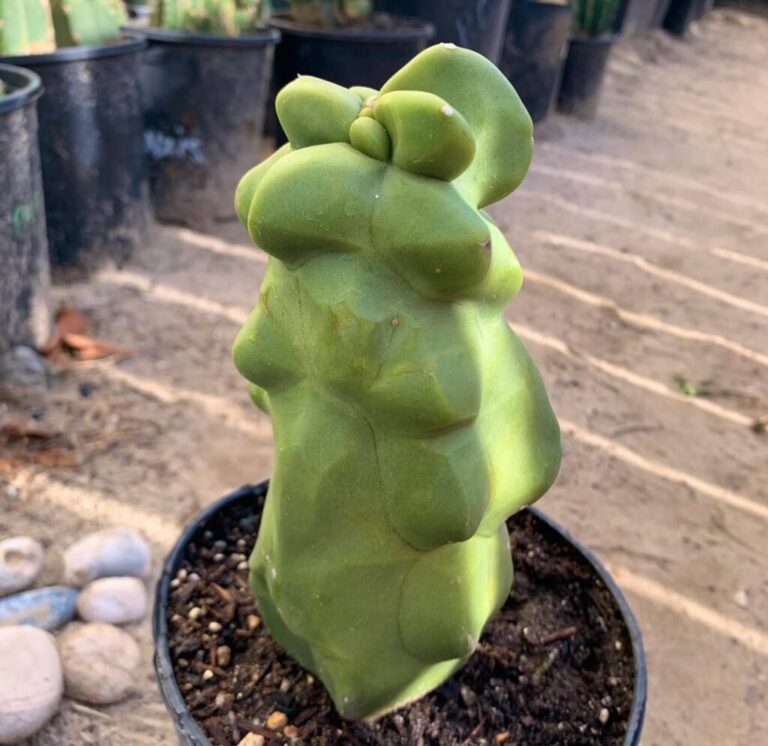- 1 Plant Profile: Thanksgiving Cactus (Schlumbergera truncata)
- 2 1. Provide Bright, Indirect Light
- 3 2. Use Well-Draining, Nutrient-Rich Soil
- 4 3. Water When the Topsoil Feels Dry
- 5 4. Maintain Moderate to High Humidity
- 6 5. Keep Temperatures Between 60–75°F (15–24°C)
- 7 6. Fertilize Monthly During Active Growth
- 8 7. Prune After Flowering for Healthy Growth
- 9 8. Repot Every 2–3 Years
- 10 9. Encourage Flowering With a Dormancy Period
- 11 10. Watch for Pests and Diseases
- 12 Thanksgiving Cactus Care Timetable
- 13 Final Thoughts
- 14 FAQs on Thanksgiving Cactus Care
Thanksgiving Cactus (Schlumbergera truncata) is a stunning houseplant that bursts into bloom just in time for the holiday season. With its vibrant flowers in shades of pink, red, white, and orange, this festive plant adds a cheerful touch to any indoor space. Unlike typical desert cacti, the Thanksgiving Cactus thrives in cooler temperatures and humid environments, making it a unique and rewarding plant to grow. But if you want to enjoy its spectacular blooms year after year, understanding its specific care needs is essential.
Many plant lovers confuse the Thanksgiving Cactus with its close relatives, the Christmas Cactus and Easter Cactus. However, the Thanksgiving Cactus stands out with its pointed, claw-like stem segments, which differ from the rounded edges of the Christmas Cactus. This distinction is important because each variety has slightly different blooming schedules and care requirements. By providing the right conditions, you can encourage your Thanksgiving cactus to bloom reliably, transforming your home into a festive oasis during the fall and winter months.
Whether you’re a beginner or an experienced plant parent, mastering the best care practices will ensure your Thanksgiving cactus remains healthy and vibrant. From proper watering techniques to ideal lighting and temperature conditions, this guide will walk you through the 10 best tips for keeping your Thanksgiving cactus thriving. By following these expert-recommended steps, you’ll be rewarded with a breathtaking floral display season after season. Let’s dive into the essential care tips that will help your Thanksgiving cactus flourish!

Plant Profile: Thanksgiving Cactus (Schlumbergera truncata)
| Feature | Details |
|---|---|
| Common Name | Thanksgiving Cactus |
| Botanical Name | Schlumbergera truncata |
| Family | Cactaceae |
| Native Region | Brazil (Tropical Rainforests) |
| Growth Habit | Epiphytic, trailing stems |
| Light Needs | Bright, indirect light |
| Watering | Moderate; allow topsoil to dry before watering |
| Soil Type | Well-draining, organic mix |
| Temperature | 60–75°F (15–24°C) |
| Humidity | Moderate to high |
| Flowering Time | Fall to early winter (November–December) |
| Toxicity | Non-toxic to pets and humans |
1. Provide Bright, Indirect Light
The Thanksgiving Cactus thrives in bright, indirect sunlight, similar to the filtered light of its rainforest habitat. Place it near an east- or north-facing window for 6–8 hours of indirect light daily.Too little light can stop flowers from blooming, while too much light might burn the foliage.Adjust the placement for optimal growth.
Pro Tip:
If natural light is insufficient, use a full-spectrum grow light for at least 10–12 hours daily to maintain healthy foliage and blooms.
2. Use Well-Draining, Nutrient-Rich Soil
Unlike desert cacti, the Thanksgiving Cactus prefers slightly moist, well-draining soil rich in organic matter. A peat-based mix with perlite or sand ensures good aeration and drainage. Avoid heavy, compacted soils that retain excess moisture, as they increase the risk of root rot and fungal diseases.
Pro Tip:
Mix 2 parts potting soil, 1 part perlite, and 1 part orchid bark to create the perfect lightweight, well-draining soil for your cactus.
3. Water When the Topsoil Feels Dry
Thanksgiving Cactus needs moderate watering—not too dry or overly moist. When the soil’s top 1-2 inches feel dry, water it.During the growing season (spring to fall), water once a week, but reduce to once every 2–3 weeks in winter. Always use room-temperature, filtered water to avoid shock.
Pro Tip:
Water thoroughly until excess water drains out. Avoid letting your cactus sit in standing water, which can cause root rot.
4. Maintain Moderate to High Humidity
Being a tropical epiphyte, the Thanksgiving Cactus thrives in 50–60% humidity. Low humidity can cause leaf shriveling and bud drop, while excessive moisture can lead to fungal growth. Increase humidity by placing a humidity tray under the plant, using a humidifier, or grouping plants together.
Pro Tip:
Avoid placing your cactus near heaters, air conditioners, or vents, as these can dry out the plant quickly, leading to stress.
5. Keep Temperatures Between 60–75°F (15–24°C)
This cactus prefers stable temperatures, thriving best between 60–75°F (15–24°C). It can tolerate slight drops in temperature, but exposure to cold drafts or sudden heat can cause stress. Keeping your plant in a cooler room (55–60°F) for a few weeks in fall can encourage flowering.
Pro Tip:
Avoid sudden temperature changes by keeping your cactus away from open windows, fireplaces, or heat-emitting appliances.
6. Fertilize Monthly During Active Growth
For healthy blooms, fertilize your Thanksgiving Cactus once a month during the growing season (spring to early fall) using a balanced liquid fertilizer (10-10-10 or 20-20-20). Reduce feeding in fall and winter, as too much fertilizer can delay or prevent flowering.
Pro Tip:
During the blooming season, switch to a high-phosphorus fertilizer (e.g., 10-30-10) to encourage flower production.
7. Prune After Flowering for Healthy Growth
Pruning helps your cactus grow fuller and bushier, preventing leggy stems. After blooming, trim one or two stem segments from each branch using sterilized scissors. This encourages new growth and enhances future flowering. Use the cuttings to propagate new plants by placing them in moist soil.
Pro Tip:
Pruning also improves airflow around the plant, reducing the risk of pests and fungal infections.
8. Repot Every 2–3 Years
Thanksgiving Cactus doesn’t like being root-bound, so repot every 2–3 years in fresh soil. Choose a pot 1–2 inches larger than the current one to provide room for root growth. The best time to repot is after flowering in late winter or early spring.
Pro Tip:
Always use a pot with drainage holes to prevent water retention and root rot issues.
9. Encourage Flowering With a Dormancy Period
To ensure abundant blooms, your cactus needs a 6-week dormancy period before flowering. Reduce watering, keep it in a cooler (55–60°F), dark location for at least 12–14 hours a day, and avoid fertilization. This triggers bud formation, ensuring beautiful blooms in November.
Pro Tip:
Once buds appear, gradually increase light and watering, but avoid moving the plant too much, as this can cause bud drop.
10. Watch for Pests and Diseases
Common pests like mealybugs, spider mites, and fungus gnats can affect Thanksgiving Cactus. Wipe leaves with insecticidal soap or neem oil if infestations occur. Root rot, caused by overwatering, can be prevented by using well-draining soil and proper watering techniques.
Pro Tip:
Inspect the plant regularly, especially under the leaves, to catch any pest issues early before they spread.
Thanksgiving Cactus Care Timetable
| Care Task | Frequency |
|---|---|
| Watering (Spring–Summer) | Once per week |
| Watering (Fall–Winter) | Once every 2–3 weeks |
| Fertilizing | Monthly (Spring to Fall) |
| Repotting | Every 2–3 years |
| Pruning | After flowering |
| Pest Check | Monthly |
Final Thoughts
Caring for a Thanksgiving Cactus is simple when you follow these expert tips. With the right balance of light, humidity, watering, and fertilization, your plant will thrive and reward you with spectacular fall and winter blooms. Understanding its seasonal dormancy needs is key to ensuring consistent flowering year after year.
FAQs on Thanksgiving Cactus Care
What is the best way to care for a Thanks .g cactus?
Thanks .g cactus care involves providing bright, indirect light, a well-draining soil mix, and consistent moisture. These plants prefer moderate temperatures between 60-70°F and thrive in humid environments. During the growing season, it is essential to water them regularly, but avoid letting the soil become overly saturated. Proper Thanks .g cactus care also includes using a pot with drainage holes to prevent root rot. If placed outdoors, ensure they are in a shaded area, as direct sunlight can scorch their leaves. These cacti are sensitive to sudden changes in temperature, so keep them away from cold drafts and heating vents.
How often should I water my Thanks .g cactus?
For proper Thanks .g cactus care, water the plant when the top inch of soil feels dry. Unlike desert cacti, Thanks .g cacti prefer a slightly moist environment, but overwatering can lead to root rot. The watering frequency depends on factors such as humidity, temperature, and the type of potting mix used. During active growth in spring and summer, water more frequently, while in fall and winter, reduce watering as the plant enters dormancy. Always use room-temperature water and avoid letting the plant sit in standing water. Proper watering practices play a crucial role in maintaining the health and longevity of your Thanks .g cactus.
What type of soil is best for Thanks
g cactus care?
The ideal soil mix for Thanks .g cactus care is well-draining and rich in organic matter. A good mix consists of potting soil, perlite, and orchid bark to ensure proper aeration. This type of soil prevents excess moisture retention, reducing the risk of root rot. Unlike desert cacti, the Thanks .g cactus prefers slightly acidic to neutral soil with a pH between 5.5 and 6.5. If your soil is too compact or retains too much water, consider repotting the plant into a more suitable mix. Using a pot with drainage holes also helps maintain the right moisture balance for healthy Thanksgiving cactus care.
Does Thanks .g cactus need direct sunlight?
Thanks .g cactus care involves providing bright, indirect sunlight rather than direct sun exposure. These plants naturally grow under tree canopies, meaning they thrive in filtered light. Too much direct sunlight can cause leaf burn and dehydration, while too little light may result in weak growth and fewer blooms. The best location is near an east- or north-facing window, where the plant receives gentle morning light. If you are growing the plant indoors, you can supplement natural light with a grow light. Proper Thanks .g cactus care ensures that the plant receives the right amount of light for optimal growth and flowering.
How can I get my Thanks . g cactus to bloom?
One of the key aspects of Thanks .g cactus care is ensuring the plant experiences the right conditions to bloom. To encourage flowering, reduce watering and expose the plant to 12-14 hours of darkness daily for six weeks before the desired bloom time. Keep the temperature around 50-60°F during this period, as cooler temperatures help trigger bud formation. Avoid moving the plant too often, as even slight disturbances can cause buds to drop. Proper Thanks .g cactus care, including consistent light cycles and avoiding stress factors, will result in vibrant and long-lasting blooms.
What temperature is ideal for Thanksg
. g cactus care?
Thanks
g cactus care requires maintaining a temperature range of 60-70°F for healthy growth. Extreme temperature fluctuations can cause stress, leading to bud drop or slow growth. During the blooming period, slightly cooler temperatures (50-60°F) help stimulate flower development. If you place your Thanks .g cactus outdoors during warmer months, bring it inside before temperatures drop below 50°F. Protect the plant from sudden drafts, air conditioners, and heaters, as these can negatively impact growth. Maintaining stable temperatures is a crucial part of Thanks .g cactus care, ensuring the plant remains healthy year-round.
How do I fertilize my Thanks .g cactus?
Fertilization is an essential part of Thanks .g cactus care, promoting healthy growth and abundant flowering. During the active growing season (spring and summer), apply a balanced liquid fertilizer every 2-4 weeks. A diluted 20-20-20 or 10-10-10 fertilizer works well. Reduce feeding in the fall and winter, as the plant enters dormancy. Over-fertilization can lead to excessive foliage growth at the expense of blooms, so always follow the recommended dosage. Additionally, using a fertilizer high in phosphorus before the blooming period can enhance flower production. Proper Thanks .g cactus care includes a balanced fertilization routine to keep the plant thriving.
Can I propagate my Thanks .g cactus?
Yes! Thanks . g cactus care includes easy propagation through stem cuttings. To propagate, take a healthy segment with at least two or three sections and let it dry for a day to prevent rot. Plant the cutting in a moist, well-draining potting mix and place it in a warm, bright location. Within a few weeks, the cutting should develop roots. Keep the soil slightly moist but not waterlogged during this period. Propagating your Thanks .g cactus allows you to expand your collection or share plants with friends and family. With proper Thanksgiving cactus care, the new plant will grow into a mature, blooming specimen over time.
How often should I repot my Thanks .g cactus?
Thanks
.g cactus care includes repotting the plant every 2-3 years or when it outgrows its container. Signs that your cactus needs repotting include slow growth, roots emerging from drainage holes, or soil that dries out too quickly. Choose a slightly larger pot with drainage holes and use a fresh, well-draining potting mix. Repotting in the spring after the blooming period allows the plant to adjust and develop strong roots. Avoid repotting too frequently, as Thanksgiving cacti prefer slightly root-bound conditions. Proper Thanks .g cactus care ensures that your plant remains healthy and continues to thrive.










